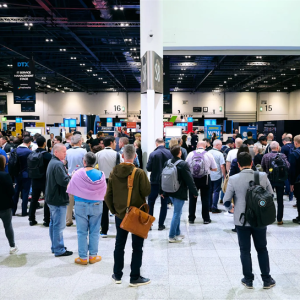
The HR function has become more important than ever, as the world of work reconsiders traditional approaches and new strategies are developed for sustainable, holistic ways to address people management that reflect this new normal.

Some 84% of workers surveyed last year by the UK’s Office for National Statistics said that they wanted to carry forward hybrid working over the long term – 12% up from those who were asked the same question a year previously. As restrictions have lifted and some sense of normality returns, the desire to formalise and retain this flexibility has only grown.
Within this context, the challenge for HR teams is to deliver and maintain a coherent and aspirational workplace culture, even in the absence of a shared physical workplace; one that recognises individual preferences, while still delivering a unified spirit and sense of purpose.
Individualising HR
According to Malini Moorthy, SVP and head of HRBP for India at Hexaware, this comes down to rewriting practices at a leadership level and trying to cater to, as far as possible, the needs of individual employees, departments and teams; something she admits can potentially create more work for HR.
“One-size-fits-all doesn’t deliver anymore,” she says. “Organisations must look at more personalised and targeted engagements. For HR teams, what this means in practice is dividing workplace needs into different cohorts, leveraging technology through consolidation and machine learning, upskilling as many employees as possible on tech literacy, and adapting each cohort to a different way of working. In essence, we have to drive cultural change through more well-defined performance metrics and close evaluation of people and productivity.”
In truth, many of these efforts reflect a continuation of previous efforts, as opposed to creating something entirely new. Even before the pandemic really hit the UK in March 2020, HR was becoming an increasing technology and data-driven function, but that direction of travel has certainly been accelerated.
Digitalisation
Moorthy stresses that although integrating greater levels of digitalisation into key parts of the function is important for reaching out to individual employees, established systems should not be overhauled overnight.
“Hexaware has been in business for more than 30 years, with over 28,000 employees, and our systems have evolved over time,” she explains. “When you’re dealing with things on that scale over that long, a complete digital overhaul wouldn’t make sense because certain processes need to be integrated. It’s important for being able to track user data if things are integrated rather than scrapped completely.
“Through this process, we have successfully been able to monitor our distributed workforce, implement more individualised contact with employees, and assign different groups and individuals to different HR teams. That way, when an employee needs to speak to HR, they get someone whose core purpose is to try to understand specific departmental issues, learn about their aspirations and how complexities can be reduced. The interaction between employees spread across global networks is also likely to be better since coordination now happens much more easily across time zones.”
To that end, Moorthy says, Hexaware has adopted an AI tool that makes seven connects per employee within their first year at Hexaware and at least twice every year from there on. The idea is to gauge and track employee sentiment, enabling HR to flag and address any potential issues at as early a stage as possible.
Talent acquisition and management
Moorthy concedes that challenges for HR go beyond managing the needs of the current workforce. Changes in working structures have also made talent acquisition and employee progression more of a challenge.
In order to attract the right people for specific roles, there is an expectation that organisations should be able to cater to specific needs that largely hadn’t existed before 2020. Rather than seeing this as a negative, Moorthy says that it gives businesses the opportunity to up their game, motivate staff, become more agile in how business is done, and create new points of difference with competitors who remain inflexible.
“Workplaces have had to become flexible for the business to survive,” Moorthy continues. “Not just from a people management perspective, but everything: how we move money, where we source our materials from, and how we can deliver the services we’ve promised to our customers. From that perspective, employees know that they have leverage. If something doesn’t work for them, it is much easier now to find a job in a similar field offered by a competitor who will supply those things. It’s a buyer’s market.
“Post-pandemic we started virtual inductions, where before it was all office-based. In fact, it’s advantageous for everyone because pre-pandemic, HR teams had to dedicate hours preparing and conducting office-based inductions for multiple employees across regions, or even countrywide.”
Changing relationships
To some, these concessions to hybrid working might seem as though the power dynamic between employer and employee has fundamentally shifted. While it might be true that organisations have had to give greater consideration to individual needs, Moorthy insists that it is ultimately for the better, since employees are likely to be more motivated and therefore more productive.
“In partnership with one of the best schools in the country, Hexaware recently launched a programme aimed at enriching the lives and careers of women,” Moorthy says. “The objective is to nurture talent, which is something that aligns very closely to our talent strategy and diversity approach across the entire organisation.
“Through this programme and other initiatives like it, we aim to increase the number of women at senior management levels across the organisation. That’s important for any business, since with diversity comes new ideas, improved productivity, the flexibility to be able to adapt to emerging markets and changing circumstances.”
It is softer, human factors like these, according to Moorthy, in combination with smart digitalisation and integration that allow for a more progressive working culture and form of human capital management. One that is not only forward-thinking and business-oriented, but also considers individual needs in a personalised, engaged and holistic way.







